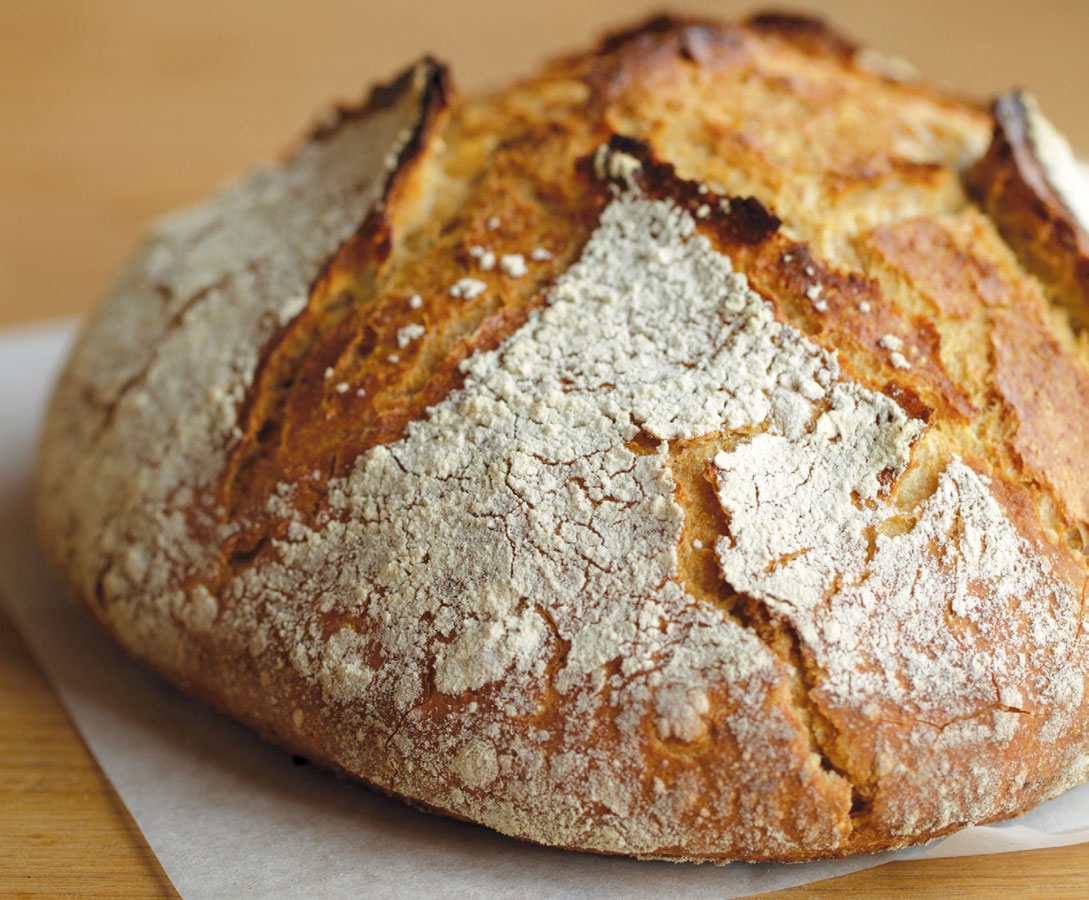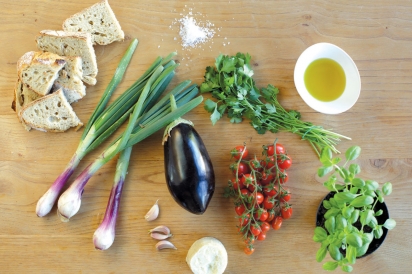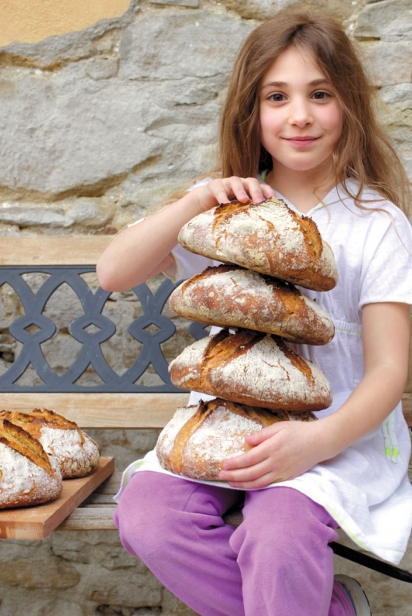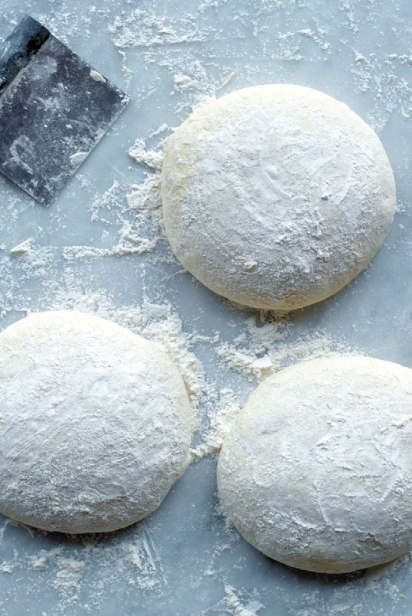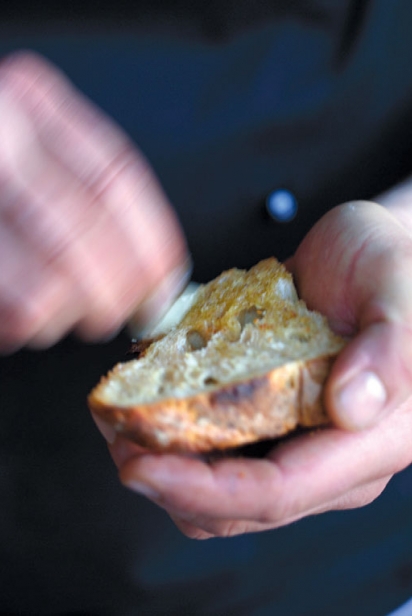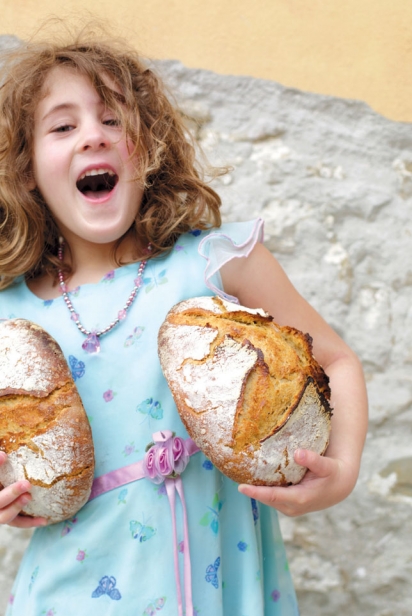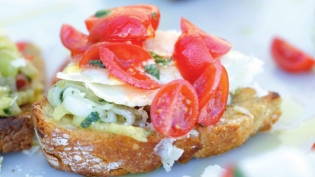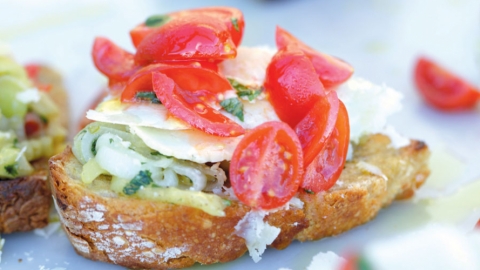The Accidental Baker
It’s midnight and my hands are caked in bread dough as I swirl my fingers to mix the flour, water and sourdough starter. Each time I bake, I aim for perfection, even though no two boules are ever alike.
For the past year I have sourced the ancient variety of wheat called Monococo, or Einkorn in English, from two different family-operated stone-ground flour mills within 20 minutes of where we live in the Piedmont region of Italy. This high-protein wheat has never been genetically modified and has significantly less gluten than modern wheat. Less gluten content in the flour means my bread making is a sticky mess. My hands are always covered with clumps of dough.
While the dough rests, I replenish my precious starter, which my wife, Tamar, says I treat as if it were my third child. At 1 o’clock in the morning I add salt and water to my fermenting mass. I gently integrate these new ingredients so as not to disturb the work that has already been done by the pre-fermented sourdough starter. Four minutes later I cover the bowl and scrub my hands under a hot stream of water. Patience and rest are what my dough needs most, as do I. I take one last look back at my creation and turn off the kitchen lights before heading upstairs to bed.
Making bread is a new passion of mine. If, 10 years ago, anyone would have predicted that today I would be living in a tiny hamlet in northwest Italy, obsessed with making the perfect loaf, I would have told them they were crazy. In those days I was busy photographing the work of artisan bakers and chefs in Paris and San Francisco, but I had no thoughts of joining their ranks. But, somehow, the aromas, the alchemy and earthiness of the process got under my skin. So did the Langhe region of Piedmont, Italy, where Tamar and I happened to visit while I was on a photo assignment nearby. Three years later we bought a rustic farmhouse in the area to restore and now, here I am, local bread baker.
My alarm goes off an hour before dawn and I tip-toe down-stairs so as not to wake my wife or daughters. I set the oven to 460° and place my ceramic cocotte pots inside. I have six loaves to deliver today to a local café, as well as to winemaker friends and the osteria where I will be eating dinner this evening. My daughter Isabelle, age 8, awakens at 7 o’clock and helps me weigh each boule, making sure they ‘re exactly 940 grams apiece, while Azalia, age 5, helps me shape the dough before the final rise.
I toast a slice of yesterday’s bread and watch Isabelle dip it into a bowl of greenish-yellow extra-virgin olive oil sprinkled with sea salt. Nothing satisfies me more than being able to feed my children homemade bread before they head out the door for school.
“Questo pane è così delizioso, papa!” shouts Isabelle. This bread is delicious, indeed.
I open the oven, place each boule in its pot, slash the dough, then quickly close the oven door. The moment of truth comes 30 minutes later when I remove the lid from each pot for the final 20-minute bake. And, though I’m never sure what to expect, this batch looks just right. The mother yeast did her work again.
A few weeks ago I shared a boule with Roberto, the talented local baker who makes the best organic bread and hand-pulled grissini in nearby Roddino. Afterwards, Roberto told me that he and his wife had eaten the entire loaf I’d made for them, and he congratulated me. I felt as if I had just landed another cookbook deal! At the local osteria where my bread is sold, I once overheard customers comment that my bread reminded them of the homemade bread they’d eaten as children. I feel a huge rush of adrenaline each time I share a loaf of crusty, warm-out-of-the-oven bread with family and friends. There’s nothing and everything to it: Flour, water, salt. Love.
During the height of the summer season here in Italy, I love to utilize as many ingredients from our garden as possible when making crostini or bruschette. Marco Battaglino, the extremely talented and hardworking chef and owner of the eponymous Osteria Battaglino in Dogliani, worked with me to create this delicious accompaniment to slices of fresh bread using melanzane, the Italian name for eggplant, and ripe cherry tomatoes.
Follow the adventures of Clay McLachlan and his family at WineAndTruffles.com.


